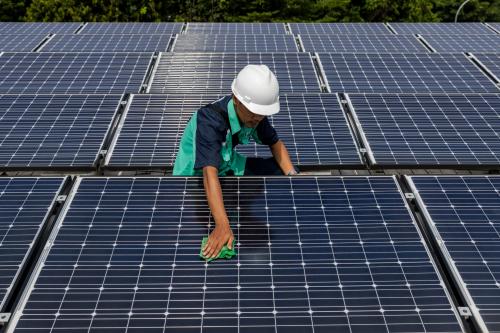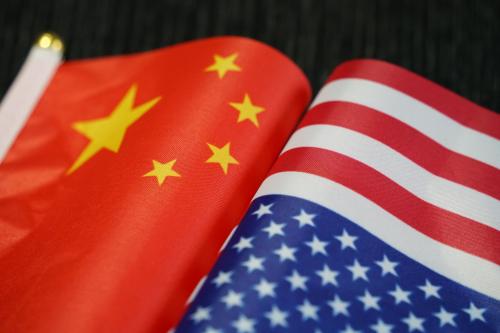If you have large savings deposits in banks, you may be pleased that the Bank of Japan decided to raise interest rates earlier this month. I certainly sympathize: you’ve obviously been hurt the recent ridiculously low interest rates. But the weight of expert opinion is not on your side. In fact, virtually no Japanese or American economists (other than those at the Bank of Japan) believe this recent policy decision is wise. Why?
Interest rates represent the price for borrowing money. When they rise, building a new factory or buying a house becomes more expensive. With fewer factories under construction and cars being sold, the economy slows down. When interest rates fall, new factories and cars become more affordable. As a result, the economy speeds up. The basics of monetary policy are no more complicated than this.
Normally, modest tweaking of interest rates can accomplish the necessary adjustment in economic growth (although the “science” of running monetary policy is rather inexact). The situation in Japan over the past decade, however, has been unusual. Many companies had over-expanded their production facilities—factories, equipment and offices—during the excessive optimism of the bubble years. Those investments were financed largely with loans from banks. When the bubble burst, companies facing a slow-growth future needed to reduce their facilities, not increase them. As long as companies are trying to cut back excess capacity, low interest rates won’t encourage them to increase investment. Thus, “zero-interest” monetary policy has failed to stimulate economic growth.
Nevertheless, without very low interest rates, the economic situation in Japan would have been much worse. Getting rid of excess facilities is painful for corporations, and low interest rates have helped them survive this transition period by reducing their debt costs. Most Japanese companies borrow from banks on a short-term basis and have been able to reduce their debt costs by rolling over past loans at the newer, lower interest rates. Had interest rates been higher, far more bankruptcies would have occurred. Companies would have had to pay more money to the banks and some would have been unable to do so.
Weeding out inefficient firms through bankruptcy is a vital part of rebuilding a healthy economy. But higher interest rates would have also have driven essentially healthy, well run firms over the edge. The current low-interest rates appear to still be sufficient to force the truly badly managed firms—like Nagasakiya or Sogo—into bankruptcy. After all, the so-called “zero interest rate” policy applies only to the overnight call market (an important but very specialized market in which banks lend money to one another on a short-term basis). Average lending rates for commercial banks have been close to 2 percent. Accounting for deflation, that means that real interest rates for loans are over 3 percent. While low, this is not zero. Rumors suggest that a number of large, badly managed firms are technically bankrupt even at current lending rates. It is politics and not higher interest rates that will determine whether they actually declare bankruptcy.
Once economic growth recovers, obviously interest rates should rise. But I do not share the BoJ’s belief that this point has been reached. Raising rates now runs the risk of choking off the modest recovery that may be underway. A couple of months of positive data for some statistical indicators such as auto sales or machinery orders are an insufficient basis for declaring that a recovery is well under way. If I were running the Bank of Japan, I would wait until early next year to consider rate increases.
Since American interest rates are higher than those in Japan, money has been flowing from Japan to the United States as investors look for higher rates of return. While long-term Japanese government bonds currently yield about 1.7 percent, those in the United States yield about 6.4 percent—almost five percentage points higher. With rapid economic growth and high levels of business investment in new plant and equipment, the American economy has become more dependent on flows of money from abroad to provide the funds for business investment. This has led some Japanese observers to suggest that Washington is “forcing” the Japanese government to keep interest rates very low in order to ensure that the flow of capital to the United States continues.
The U.S. government should be concerned about the many factors involved in maintaining economic growth at a sustainable level, including the flow of funds from abroad. However, the pressure on Japan to keep interest rates low has little or nothing to do with maintaining American economic growth. U.S. Treasury officials, like virtually all economists, believe that low interest rates are an important policy for restoring Japanese economic growth. A growing Japan provides a better economic partner for the United States than does a stagnant Japan.
As a matter of fact, American officials are increasingly worried that too much money is flowing into the United States from Japan and some other countries. For 20 years, the United States has had a net inflow of investment from the rest of the world, but the size of that flow has been increasing in the past couple of years due to unusually high domestic economic growth and insufficient domestic savings to finance investment in new facilities. This trend is not sustainable—the United States cannot have an endlessly increasing dependence on foreign money to finance its growth. Therefore, from the perspective of what’s the best policy for the United States, an increase in Japanese interest rates would be a good development, helping to slow down the flow of money by narrowing the gap in interest rates. This suggests that the U.S. government has been acting primarily out of concern for restoring Japanese economic growth and not out of any desire to use Japan unfairly to maintain high growth at home.
A more likely explanation for what is happening is a power struggle between the Ministry of Finance and the Bank of Japan. Under the new BoJ law that went into effect in 1998, the bank became a more independent agency of the government. This is considered to be a favorable development by economists—monetary authorities should not be subject to orders from politicians who might wish to use monetary policy for their own purposes (such as manipulating monetary policy to sustain high economic growth just before an election even though this might be bad for the longer term health of the economy). Foreign observers, therefore, were pleased to see the new formal independence of the Bank of Japan. However, the newly independent BoJ appears to have been overly eager to prove to everyone that it need not listen to ideas from the Ministry of Finance. If the MoF engineered the reduction of interest rates to very low levels in the period from 1994 to 1996 and now recommends maintaining these levels, then the easiest way to prove independence is to argue in favor of higher rates. This is a poor basis for making policy.
At least the BoJ’s move was a minor one. In fact, deposit rates might not change at all, and the negative impact on the economy will be small. The real danger will come if this initial move indicates a trend, in which the BoJ will continue raising rates over the coming months until they reach a “normal” level (whatever that might mean). We can only hope that this minor increase has satisfied the BoJ’s political need to prove its institutional independence and the bank will now listen to sound advice from outside economists.
The Brookings Institution is committed to quality, independence, and impact.
We are supported by a diverse array of funders. In line with our values and policies, each Brookings publication represents the sole views of its author(s).



Commentary
Op-edOn Japan: No Way to Run an Economy
August 23, 2000